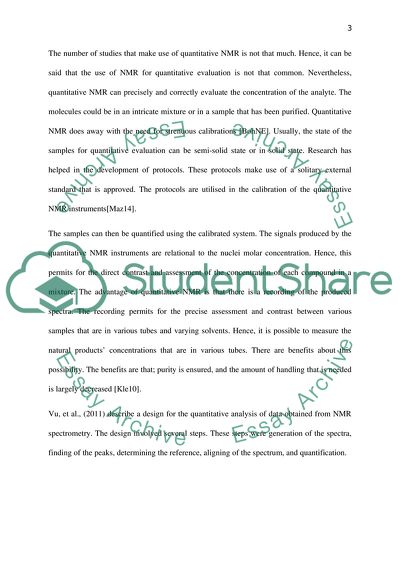Cite this document
(The Scope and Limitations of Quantitative Nuclear Magnetic Resonance Technique Coursework Example | Topics and Well Written Essays - 1500 words, n.d.)
The Scope and Limitations of Quantitative Nuclear Magnetic Resonance Technique Coursework Example | Topics and Well Written Essays - 1500 words. https://studentshare.org/chemistry/1846947-the-scope-and-limitations-of-quantitative-nmr
The Scope and Limitations of Quantitative Nuclear Magnetic Resonance Technique Coursework Example | Topics and Well Written Essays - 1500 words. https://studentshare.org/chemistry/1846947-the-scope-and-limitations-of-quantitative-nmr
(The Scope and Limitations of Quantitative Nuclear Magnetic Resonance Technique Coursework Example | Topics and Well Written Essays - 1500 Words)
The Scope and Limitations of Quantitative Nuclear Magnetic Resonance Technique Coursework Example | Topics and Well Written Essays - 1500 Words. https://studentshare.org/chemistry/1846947-the-scope-and-limitations-of-quantitative-nmr.
The Scope and Limitations of Quantitative Nuclear Magnetic Resonance Technique Coursework Example | Topics and Well Written Essays - 1500 Words. https://studentshare.org/chemistry/1846947-the-scope-and-limitations-of-quantitative-nmr.
“The Scope and Limitations of Quantitative Nuclear Magnetic Resonance Technique Coursework Example | Topics and Well Written Essays - 1500 Words”. https://studentshare.org/chemistry/1846947-the-scope-and-limitations-of-quantitative-nmr.


